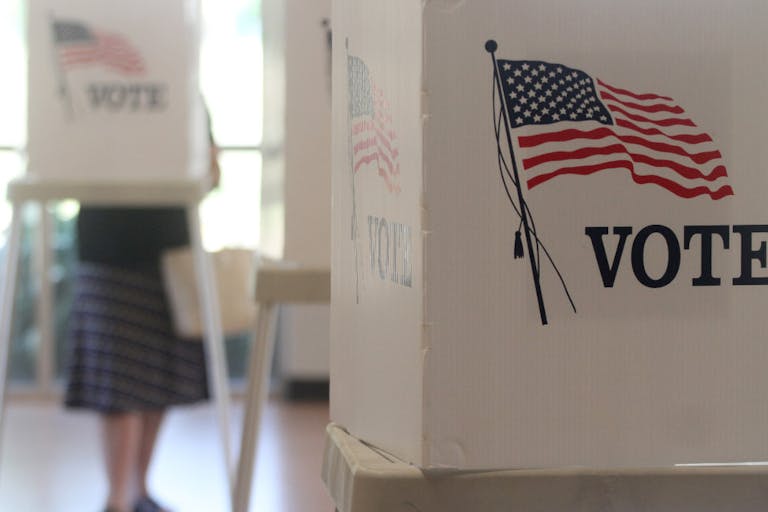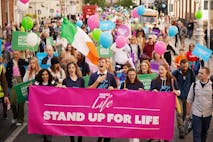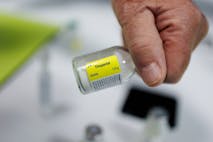
Man convicted of trafficking stolen body parts sentenced to six years in prison
Cassy Cooke
·
Nebraska voters will see two abortion ballot measures this November
This coming November, Nebraska voters will likely be faced with two ballot measures that deal with abortion in varying degrees. Though they have similar names, they would have radically different impacts on abortion in the state.
Protect Our Rights
The first proposed ballot initiative is the “Protect Our Rights” measure, which would establish a constitutional “right” to abortion up until the point of viability — an arbitrary guideline usually considered to be around 24 weeks gestation though babies born as early as 21 weeks have survived. Notable supporters include Planned Parenthood and the ACLU of Nebraska.
The measure reads:
All persons shall have a fundamental right to abortion until fetal viability, or when needed to protect the life or health of the pregnant patient, without interference from the state or its political subdivisions. Fetal viability means the point in pregnancy when in the professional judgment of the patient’s treating health care practitioner, there is a significant likelihood of the fetus’ sustained survival outside of the uterus without the application of extraordinary medical measures.
“As mothers, doctors, families, concerned citizens and people navigating pregnancy, we were united in the belief that patients and providers should have the freedom to make their own health care decisions, not politicians,” Ashlei Spivey, a member of Protect Our Rights’ executive committee, said.
Should it pass, the measure would likely undo the state’s current law, which protects preborn children from abortion after 12 weeks, and remove other abortion restrictions like parental notification laws.
READ: Self-managed abortions are rising… and Big Abortion is gaslighting the public
Protect Women and Children
Article continues below
Dear Reader,
In 2026, Live Action is heading straight where the battle is fiercest: college campuses.
We have a bold initiative to establish 100 Live Action campus chapters within the next year, and your partnership will make it a success!
Your support today will help train and equip young leaders, bring Live Action’s educational content into academic environments, host on-campus events and debates, and empower students to challenge the pro-abortion status quo with truth and compassion.
Invest in pro-life grassroots outreach and cultural formation with your DOUBLED year-end gift!
The other ballot measure is titled “Protect Women and Children,” and it’s backed primarily by those who oppose abortion. The amendment does not seek to eradicate abortion but instead seeks to keep the current status quo in the state and allow abortion in the first trimester. Supporters of this measure include the Nebraska Catholic Conference, Nebraska Right to Life, and Nebraska Family Alliance.
The ballot measure reads:
Except when a woman seeks an abortion necessitated by a medical emergency or when the pregnancy results from sexual assault or incest, unborn children shall be protected from abortion in the second and third trimester.
Though the Protect Women & Children initiative would fail to protect most preborn babies in the state from abortion, the state’s Catholic bishops have said it is “morally permissible” to vote in favor of the measure. The bishops cite several reasons for this, including that the measure does not establish a “right” to abortion, it leaves current abortion restrictions in place, and it provides constitutional protection for preborn children in the second and third trimesters. Still, the bishops point out that voters must understand that abortion is never morally acceptable, and this measure is only an incremental step, not a permanent compromise. The Nebraska Catholic Conference has more to say on this issue here.
“Voters are excited to have a sensible alternative that reflects Nebraskans’ commonsense approach to limits on abortion, protects women’s health and relationship with their doctors, and preserves parental notification requirements that save lives and protect vulnerable minors,” the Protect Women & Children’s committee said in a statement.
Nebraska Right to Life executive director Sandy Danek said she is hopeful that people understand the differences between the two amendments.
“We trust that the majority of Nebraskans will not only reject that amendment, but also vote YES on the proposed amendment, Protect Women and Children,” she said in a statement. “We agree ideologically with those who want to protect babies at any stage in the womb,” she added. “Nebraska Right to Life will continue to work toward the goal of protecting all life, from the moment of conception to natural death.”
Both measures have submitted petition signatures, which the Secretary of State’s office is currently verifying. Both are expected to be on the November ballot and are awaiting final official approval.
Live Action News is pro-life news and commentary from a pro-life perspective.
Contact editor@liveaction.org for questions, corrections, or if you are seeking permission to reprint any Live Action News content.
Guest Articles: To submit a guest article to Live Action News, email editor@liveaction.org with an attached Word document of 800-1000 words. Please also attach any photos relevant to your submission if applicable. If your submission is accepted for publication, you will be notified within three weeks. Guest articles are not compensated (see our Open License Agreement). Thank you for your interest in Live Action News!

Cassy Cooke
·
Analysis
Cassy Cooke
·
Politics
Bridget Sielicki
·
Politics
Angeline Tan
·
Politics
Nancy Flanders
·
Politics
Right to Life UK
·
Politics
Bridget Sielicki
·
International
Bridget Sielicki
·
International
Bridget Sielicki
·
International
Bridget Sielicki
·
Human Rights
Bridget Sielicki
·